We share the planet with a huge diversity of plants and creatures. But we can see similarities between organisms that live continents apart or are very different in other aspects. One reason for this is convergent evolution.
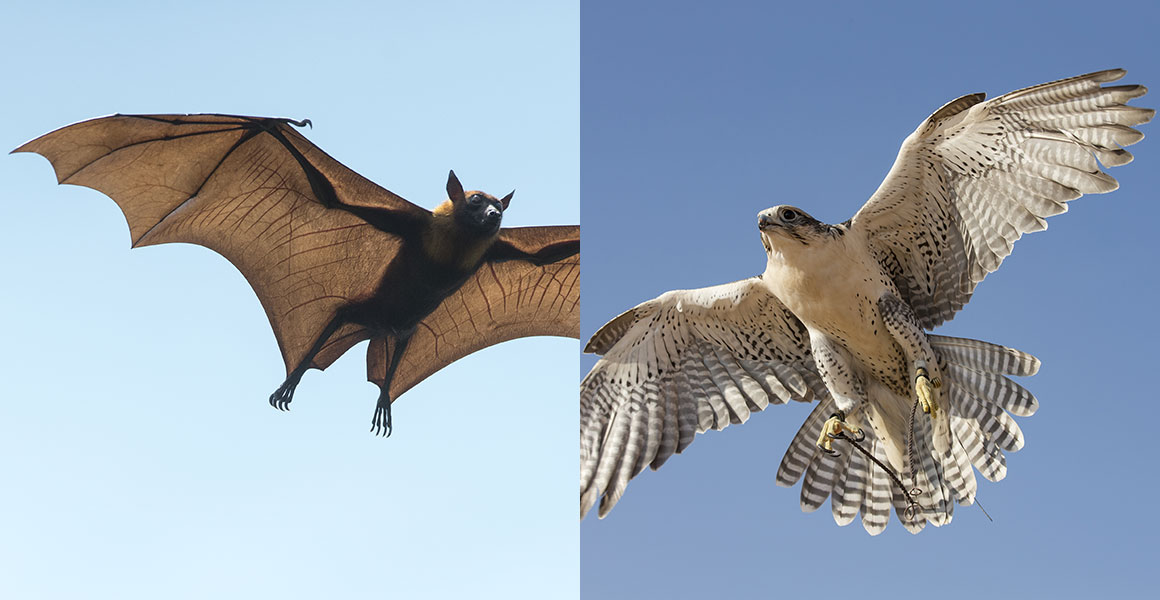
Bats and birds are very different creatures - a bat wing is more like a human arm than a bird’s wing. Yet both have evolved the remarkable ability to fly. A shared ability like this with independent origins is an example of convergent evolution. © Independent birds (left) and Katiekk (right)/ Shutterstock
What is convergent evolution?
Convergent evolution occurs when organisms that aren’t closely related evolve similar features or behaviours, often as solutions to the same problems. The process can result in matching body shapes, colour patterns or abilities. Dr Natalie Cooper, one of our evolutionary biologists who specialises in vertebrates explains:
‘In convergent evolution, two organisms look or behave in a very similar way, even though they’re only distantly related. This means they’ve independently evolved those similarities rather than inheriting them from a common ancestor.’
We observe this phenomenon all over the tree of life, from mammals and invertebrates to plants and microorganisms.
How and why does convergent evolution happen?
Species face different challenges, called selection pressures, depending on their environment. These pressures could include which predators they encounter, what food is available or conditions such as extreme heat or cold.
Since DNA is the building block of life, convergent evolution starts at the level of DNA. Mutations in an individual’s DNA can result in a trait that makes them better suited to their environment. These individuals tend to survive more often than those without the beneficial trait and pass this trait on to their offspring.
Over time, all individuals of a species evolve to have that trait or characteristic. This helps the species to be more successful in its habitat. It’s natural selection at work.
In some examples of convergent evolution, species evolve the same solution to a problem but take a different genetic route to get there. In other cases, the convergence takes place at the molecular level and the same genetic changes occur in different species.
Which birds inspired Charles Darwin’s natural selection theory?
How did we discover convergent evolution?
Scientists have known for a long time that species that we assumed were only distantly related had evolved the same or similar adaptations to the same environmental pressures. The discovery of DNA helped to confirm this theory.
Natalie explains, ‘Until we understood DNA and how it evolves, there were a lot of things that we thought were very closely related because they look very similar, but they turned out to be very distantly related.’
‘For example, falcons, hawks and eagles look like very similar birds of prey, yet we discovered they’re actually really distantly related. Falcons are more closely related to parrots than to hawks and eagles!’
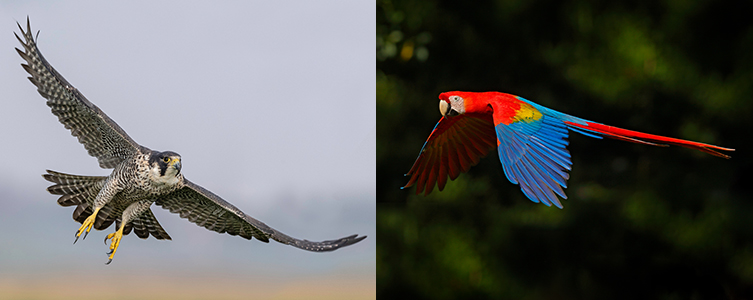
Without DNA evidence, we wouldn’t know that peregrine falcons are more closely related to parrots than to hawks and eagles. © Sriram Bird Photographer (left) and Ondrej Prosicky (right)/ Shutterstock
What is the difference between convergent and divergent evolution?
Divergent evolution is the opposite of convergent evolution. Divergent evolution occurs when two species share a common ancestor and evolve one or more characteristics that make them different to each other. This might happen because they find themselves in different environments, facing different conditions that influence their evolution.
A good example is the modern elephant and the extinct woolly mammoth. These creatures evolved from a common ancestor, but experienced different environments. Exposed to a cold climate, mammoths adapted by growing warm, furry coats.
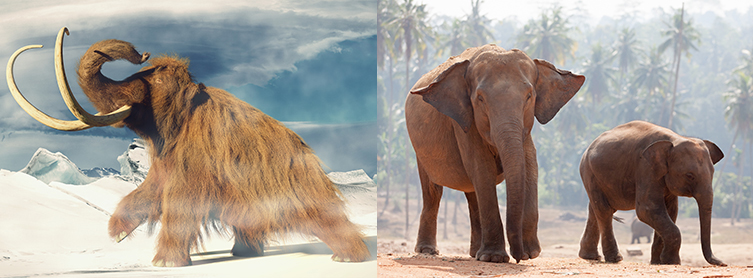
The evolution of woolly mammoths and Asian elephants diverged as they adapted to their surroundings. Woolly mammoths evolved thick coats and small ears to survive chilly temperatures, whereas Asian elephants retained a sparse coat and large ears to help heat escape from their bodies. © Dotted Yet (left) and Oleksii G (right)/ Shutterstock
Are there traits that have evolved repeatedly?
Yes - this is called recurrent evolution. Traits that have emerged many times include a streamlined body shape suited to swimming and the ability to fly.
A particularly good example of recurrent evolution is the repeated evolution of species towards a crab-like shape or body plan. At least five different groups of ten-legged, or decapod, crustaceans have evolved the crab body plan to adapt to their unique aquatic environment. One way or another, it looks like crabs would have found a way to exist!
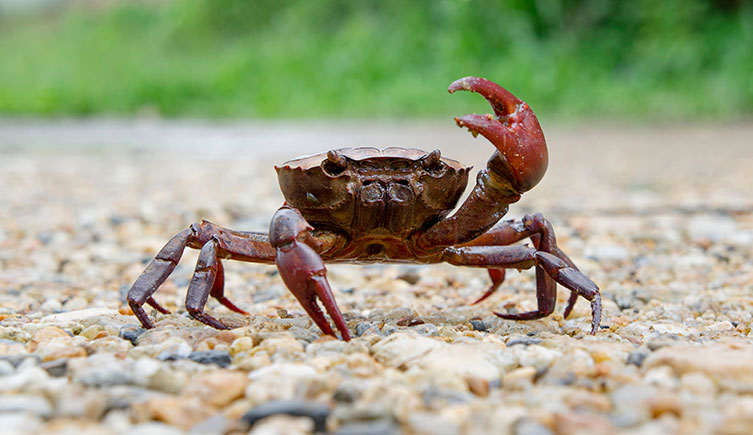
The phenomenon of recurrent evolution towards a crab-like body plan is called carcinisation. © Pratan/ Shutterstock
Can convergent evolution happen millions of years apart?
Yes. Species have evolved similar traits and attributes when separated by oceans, continents or even by millions of years.
Dolphins and extinct marine reptiles called ichthyosaurs are a prime example. They evolved a very similar body shape. Yet ichthyosaurs lived in our oceans hundreds of millions of years before dolphins appeared. This tells us that these animals experienced similar conditions and lifestyles, even if millions of years apart.
In this way, convergence between extinct species and ones that still exist today can help us learn about the ecological conditions creatures were experiencing millions of years ago.
Thirteen interesting examples of convergent evolution
Organisms that show convergent evolution appear across nature. Here’s a small selection. Which is your favourite?
1. Swimming shape: Sharks, dolphins and ichthyosaurs

Capable of zipping through the ocean at impressive speeds, ichthyosaurs looked a lot like dolphins. © Dotted Yeti (top) and michaelgeyer_photography (bottom)/ Shutterstock
Fishes, such as sharks, cetaceans, including dolphins, and ichthyosaurs all converged on the same streamlined shape to help them thrive in the marine environment.
2. Camera-type eyes: Mammals, octopuses and squids
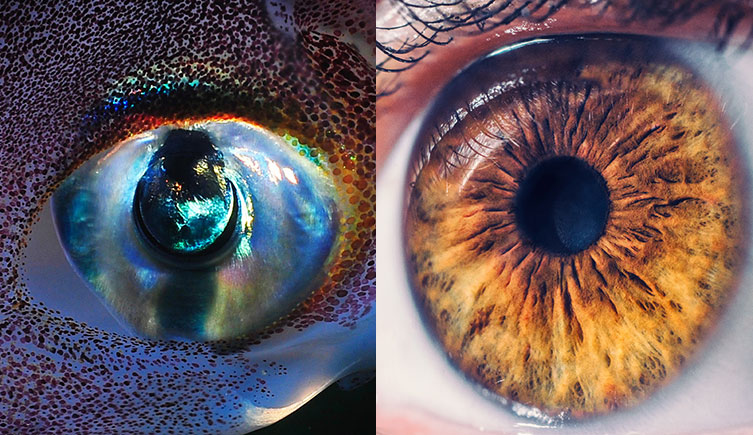
Say cheese! We’re not the only creatures to have evolved camera eyes for better vision. Octopuses and squids have too. © Rui Palma (left) and hispan (right)/ Shutterstock
We can see as well as we can thanks to our complex eye structures, which process images in a similar way to cameras. Light enters through an opening. Then a lens focuses it onto a layer of light-detecting cells at the back of the eye called the retina.
We share this structure with our fellow mammals and other vertebrates. Camera eyes also evolved independently in cephalopods, which include squids and octopuses.
Unlike humans and other vertebrates, cephalopods’ camera eyes lack a blind spot. The blind spot in our eyes occurs at the point on the retina where the optic nerve connects. This area contains no light-detecting cells.
3. Opposable thumbs: Primates, opossums, koalas, giant pandas and chameleons
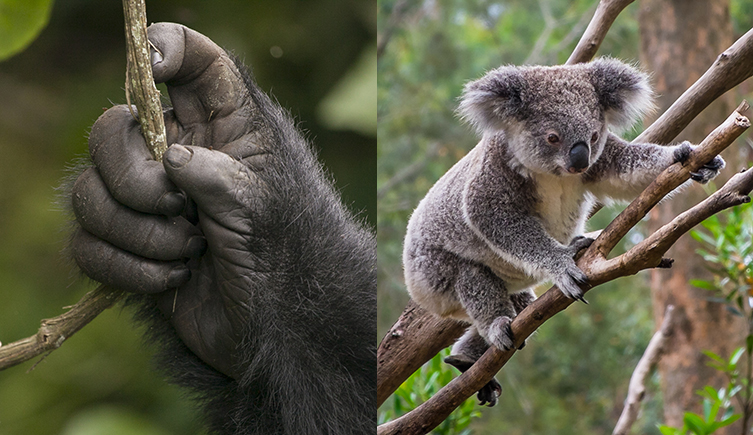
Opposable thumbs are very useful for gripping things. Some animals have opposable toes as well as thumbs. Koalas have six opposable digits - one on each foot and two on each hand. © TravellingFatman (left) and Lucie Lang (right)/ Shutterstock
Opposable thumbs help us perform daily tasks ranging from driving to using mobile phones.
A relatively small number of animals have opposable thumbs. They include primates, opossums, koalas, giant pandas and chameleons. Being able to rotate the thumb and bring it to meet other digits allows animals to pick up and hold objects.
Humans and other primates, such as chimpanzees and gorillas, inherited opposable thumbs from a common ancestor. This handy trait may have evolved originally to enable us to grasp branches. But it also proved very useful for gathering and preparing food and holding tools.
A similar feature evolved independently in other animals. Chameleons’ toes are arranged in opposite groups of two and three. They use them to hold on to branches as they climb.
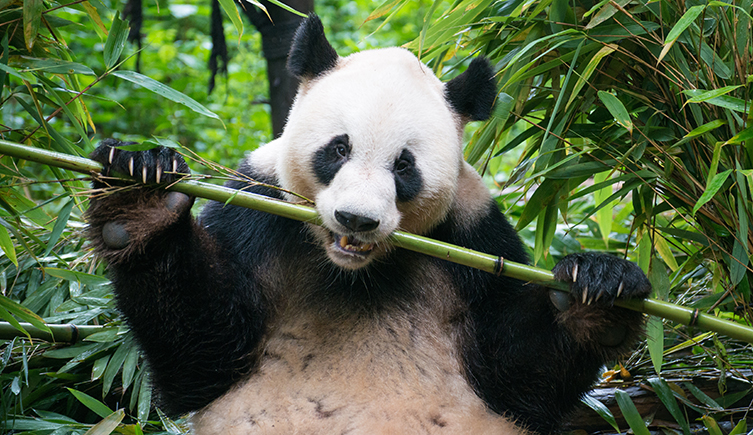
You’ll notice that giant pandas appear to have five fingers in addition to their stumpy thumb. That’s because their ‘thumb’ evolved from a wrist bone. © Kevin Bluer/ Shutterstock
Giant pandas are an interesting case. Their opposable thumb is actually not a thumb because it evolved from a wrist bone. It’s very short, but in combination with their five fingers, it helps them to grip the bamboo they eat.
4. The power of flight: Birds, bats, moths and many more

Hummingbirds and their hawkmoth namesakes sip nectar from flowers mid-flight. One dips its beak, the other its long mouthpart, called a proboscis. © crbellette (left) and Ian Grainger (right)/ Shutterstock
Many creatures developed the ability to move through the air. They may have evolved this trait to better evade predators, possibly first hopping, jumping and gliding, then developing flight from there.
Bats and birds converged on the ability to fly by flapping their wings. If you compare their wings, however, you can see that how they evolved to do this is very different.
Hummingbird hawkmoths are so called because they evolved the ability to hover in a very similar way to hummingbirds.
Flying squirrels and sugar gliders, a species of marsupial, converged on gliding as a way to travel from tree to tree. They each evolved big flaps of skin attached to their limbs to enable them to do this. Certain frog, lizard, snake, fish and squid species can also glide.
5. Blood-sucking mouthparts: Fleas and mosquitos
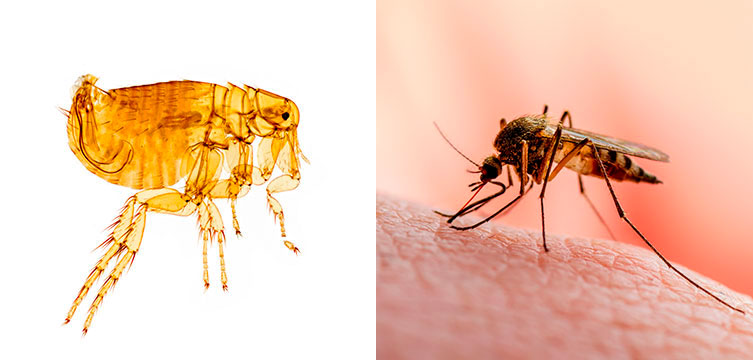
Real-life vampires. Both fleas and mosquitos evolved a taste for blood. © The Trustees of The Natural History Museum, London (left) and nechaevkon/ Shutterstock (right)
Unfortunately for many animals, including us, fleas and mosquitos converged on the ability to bite and suck blood. Arthropods - the group of organisms that includes insects, spiders and crustaceans - have evolved the mouthparts to suck blood more than 20 times.
Theories vary on why insects evolved this capacity. It may be because they were living in close quarters with animals - sharing their nests, for example - and developed a taste for their blood by chance. Blood is nutrient-rich, so it was a smart adaptation, if an unfortunate one for us.
In some species, such as mosquitoes, only the females drink blood. The high-protein source helps them to produce healthy young.
6. Prickly spines: Hedgehogs, echidnas and tenrecs
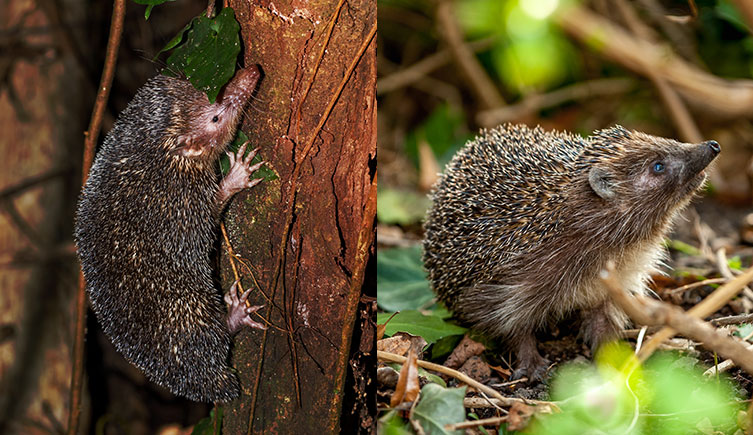
Tenrecs last shared a common ancestor with hedgehogs around 160 million years ago. In fact, tenrecs are more closely related to elephants than their lookalikes! © toicadrian (left) and bardzo.photo (right)/ Shutterstock
Several creatures have evolved protective spines to repel predators.
Spiky animals include hedgehogs, porcupines, spiny anteaters, or echidnas, and some tenrecs. The extinct early mammal species Spinolestes, which lived 125 million years ago during the Cretaceous Period, is another.
7. Echolocation: Whales and bats
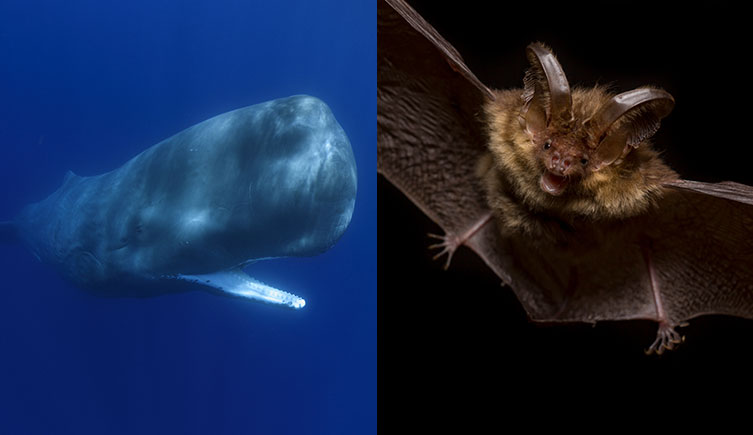
Echolocation is a sophisticated sense that makes it easier for bats and whales to hunt in poor light. © Thierry Eidenweil (left) and Martin Janca (right)/ Shutterstock
Several animals use echolocation, a biological form of sonar, to navigate, hunt and communicate. This includes whales and bats.
The same mutations in hearing-related genes help both to find prey in low-light conditions - be that in deep water or at night.
Various deep-diving toothed whales, including sperm whales, also converged on a particular inner ear bone shape.
‘The extreme depths that toothed whales go down to provide a strong selection pressure,’ explains our scientist Dr Travis Park, who’s co-authored research on ear bone convergence in cetaceans. ‘Their ear bones have to be a particular shape to maximise their hearing ability at those depths.’
This evolution in toothed whales gave them an advantage over their prey. It may have had disastrous results for the nautiluses that used to be numerous at those depths. Travis adds, ‘It’s suspected that nautiluses’ hollow shells made them really easy to find when whales started echolocating. It looks like they likely nearly wiped them out.’
8. Meat-eating plants: Fly traps and pitcher plants
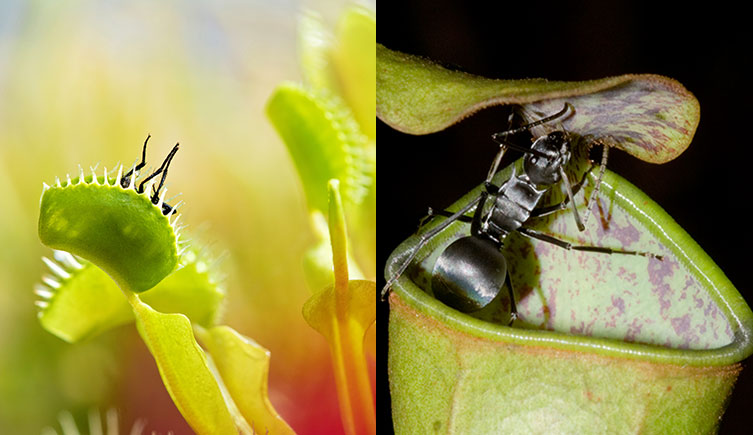
Pitcher plants sometimes allow a scout ant to escape unharmed, so it’ll bring its companions over for a look. Once more ants have arrived, the sneaky plant activates its trap - scoring a much bigger dinner! Venus fly traps are another carnivorous plant. © Kitty Bern/ Shutterstock (left) and (right) Bauer et al 2012, PLoS ONE (CC BY 2.5) via Wikimedia Commons
Multiple plant species have acquired the ability to devour prey. This is probably to capture nitrogen and phosphorus lacking from the soil.
Meat-eating plants include the famous Venus flytrap and the tropical pitcher plant, which has a trap shaped like a cup or pitcher.
Carnivorous plants use a variety of sticky tricks to lure and imprison unlucky animals, which can range from insects to small mammals and reptiles, but their digestive juices are very similar.
9. Limbless slithering: Snakes and caecilians
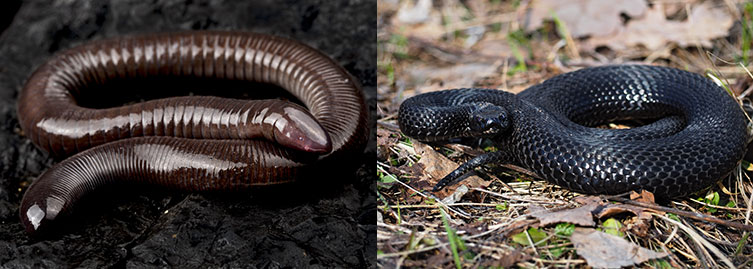
At first, scientists thought caecilians were members of the snake family. Their scientific name, Gymnophiona, roughly translates as ‘naked snake’. © reptiles4all (left) and Sergei Mironenko (right)/ Shutterstock
Several groups of vertebrates have evolved to lose their limbs altogether. Snakes are perhaps the best-known example.
Yet Dr Mark Wilkinson, one of our evolutionary biologists and amphibian researchers, explains, ‘This overall body form has evolved lots of times within reptiles, amphibians and fishes’.
This includes caecilians, a group of mysterious, tropical, earth-dwelling amphibians.
‘One of the understandings of why caecilians have elongated bodies and don’t have limbs is because of their way of life,’ explains Mark. ‘Moving through their burrows, limbs can be an obstacle rather than an asset.’
Fossil evidence suggests snakes evolved from lizards with similar burrowing behaviour.
10. Antifreeze protection: Arctic and Antarctic fish
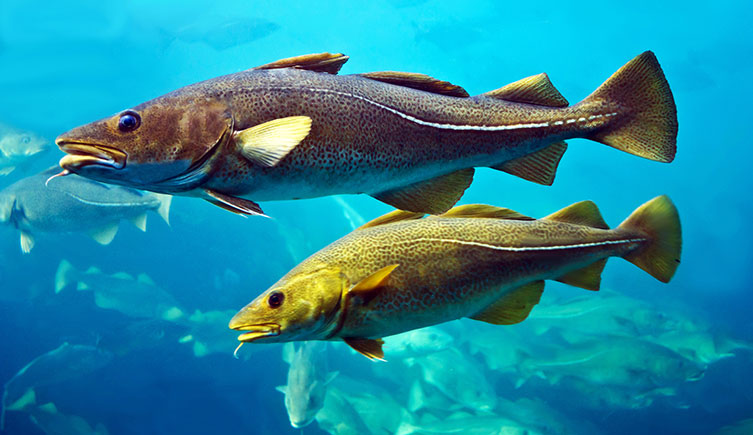
Antifreeze proteins allow Arctic cod and notothenioid fishes to survive inhospitable conditions at the planet’s poles. © Travel Faery/ Shutterstock
Arctic cod and the Antarctic notothenioid group of fishes both produce very similar antifreeze proteins that prevent their blood and tissues from freezing in icy waters.
Yet these fishes, which live at opposite poles, are only very distantly related. The protective proteins evolved independently in response to similarly hostile conditions.
11. Desert survival tactics: Cacti and euphorbs

Cacti (left) are iconic desert plants, but fewer people have heard of the strikingly similar euphorbs (right). © Galyna Andrushko (left) and Jose Arcos Aguilar (right)/ Shutterstock
At the other extreme in desert areas, species often develop smart ways of surviving the intense heat. Retaining water is key.
Two plants that have made the same adaptations are cacti and euphorbs. Natalie elaborates:
‘Cacti and euphorbs have evolved the same solutions - big fleshy stems full of water, deep roots and spines instead of leaves. They look identical to us. But in Africa, everything that looks like a cactus is actually a euphorb!’
These features help the plants to access what little water there is and to limit its loss.
12. Very long necks: Sauropod dinosaurs and giraffes
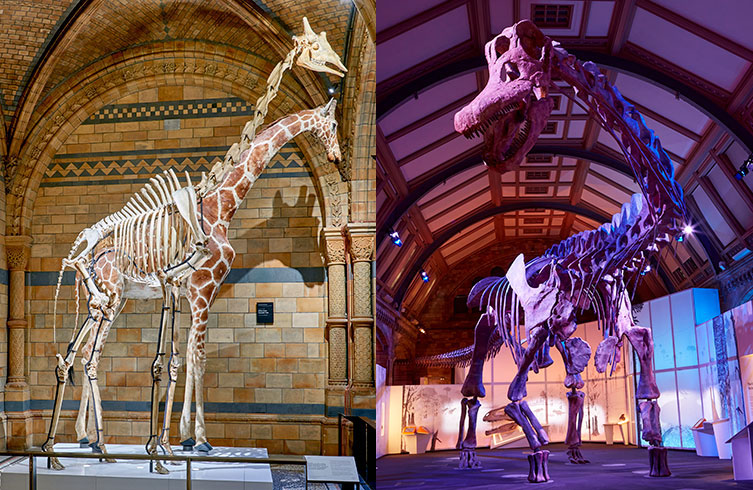
Giraffes can reach the choicest leaves on high tree branches thanks to their long necks. Sauropod dinosaurs, such as Patagotitan, could do the same.
Have you ever wondered how the giraffe got such a long neck? It may have evolved because it allowed giraffes to reach nutritious leaves in the canopies of tall trees, eliminating competition from shorter herbivores. But giraffes also use their necks in courtship fights and to look for predators.
Sauropod dinosaurs, such as Brachiosaurus and Patagotitan, shared the same feeding adaptation, but even longer. The 15-metre-long neck of Mamenchisaurus is the record holder. Scientists speculate whether these dinosaurs also held neck-butting contests like giraffes.
Whereas giraffe necks contain just seven big bones, the same as almost all mammals, including us, sauropod necks had up to 19 of these cervical vertebrae.
13. Hypodermic needles: Several species
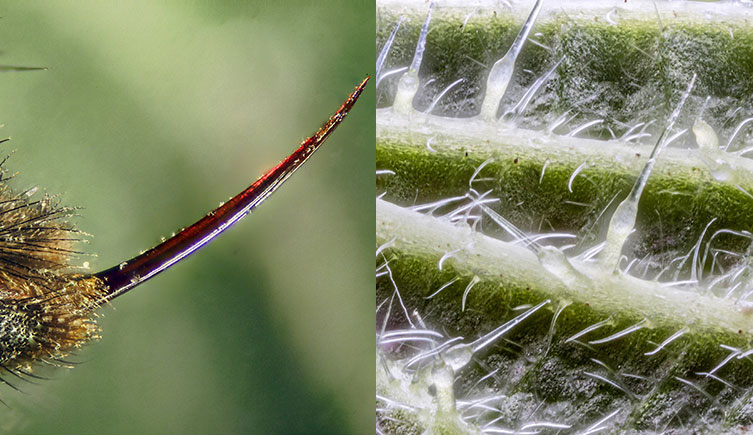
Bees and stinging nettles evolved different hypodermic needle-like stings. They have equally unpleasant results for us. © Frank Reiser (left) and Chrispo (right)/ Shutterstock
The invention of the hypodermic needle - a very thin, hollow needle with a sharp point used to inject or extract fluids - was a major breakthrough in medicine. Yet several organisms developed this ingenious technology long before we did.
Species have evolved this characteristic in very different ways.
Wasps, bees and other stinging insects developed their sting from a structure that originally helped them lay their eggs. The highly venomous cone snail evolved a needle extension from one of its teeth. Stingray stingers developed as an extension of their spine.
Then there’s the plant kingdom! Anyone who’s brushed past a bank of nettles has felt their irritating sting. Nettle stings developed from hair-like structures called trichomes that became hollow and pointy.
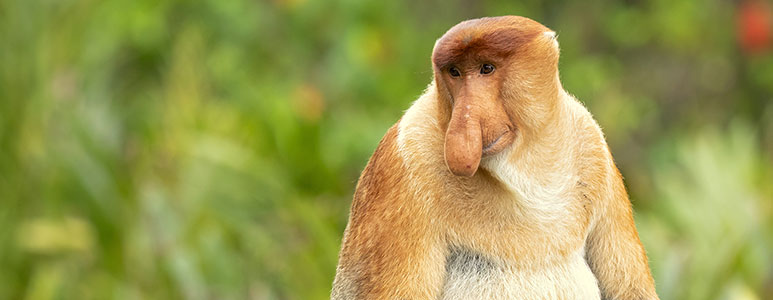
What on Earth?
Just how weird can the natural world be?
Don't miss a thing
Receive email updates about our news, science, exhibitions, events, products, services and fundraising activities. We may occasionally include third-party content from our corporate partners and other museums. We will not share your personal details with these third parties. You must be over the age of 13. Privacy notice.
Follow us on social media